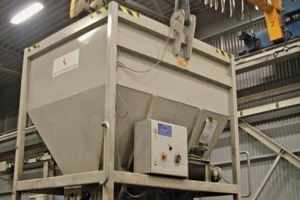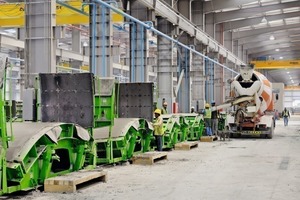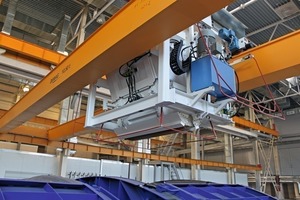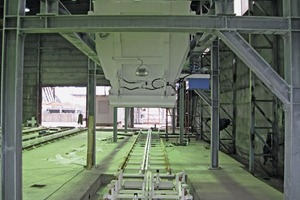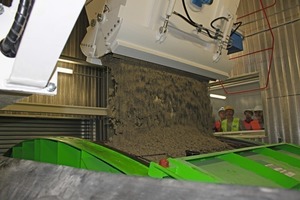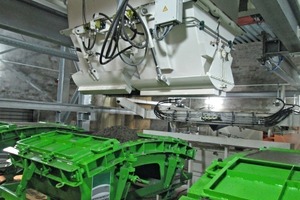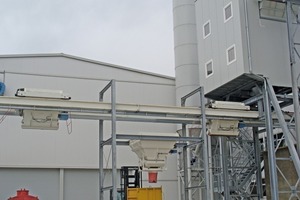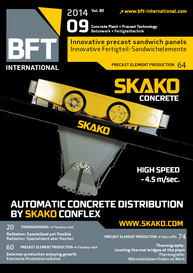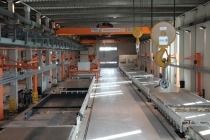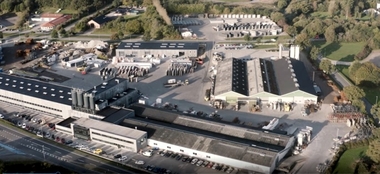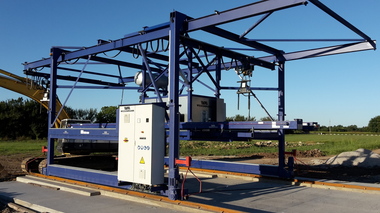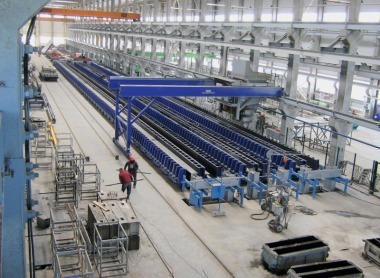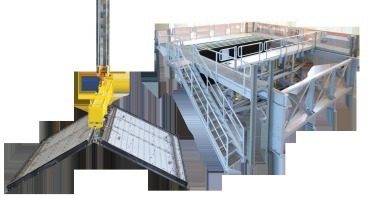Concrete placing systems in segment production
Every tunnel project is unique in respect of the particular general conditions. Which driving and lining method is to be used is determined on the basis of a thorough evaluation of the same. Though the share of mechanically driven tunnel projects is more and more growing all over the world. If a constructor has taken a decision in favor of mechanical tunnel construction by means of TBM, the segment production has to be taken into account as well or he has to rely on the know-how of a precast concrete manufacturer.
In the last few decades, two different production methods have been developed, i.e. the stationary or circulation production; which one to use depends, among others, on the geographical position, the wage level, the availability of skilled personnel or even the statuary rules of the respective project country.
Herrenknecht Formwork Technology GmbH being part of the affiliated group Herrenknecht AG offers the adequate complete solutions for this purpose, with WMW Industrieanlagen GmbH supporting them as specialist in concrete placement, transport and distribution systems and their experience gained over 20 years.
As different concrete placing systems each are available for both production methods, an appropriate solution can be found for any project requirement:
Concrete placing systems for stationary production
The WMW special crane bucket, provided that an adequate crane exists as well as the corresponding building height, is characterized by low investment costs and its small footprint. The crane distributor bucket for transporting on a crane hook is operated at the distributor via a switch cabinet or by radio remote control including the necessary functions for spiked roller, vibrator and flap.
Truck mixers are used as concrete placing systems especially if a high flexibility is required, with investment costs kept as low as possible. However, truck mixers used for feeding the segment formwork require a large amount of space owing to the driveways among the individual formwork units. Moreover, the limited discharge height of the truck mixer may lead to the fact that the angle of repose is too low, which means that not any concrete mix design can be processed in this way.
If casting is to be done with reduced manpower and within a limited time frame, the WMW 3-axes concrete distributor traveling on a crane is recommended. This concrete distributor comprises a two-girder bridge with bucket, lift frame and rugged traveling frame, allowing the concrete distributor to reach almost any part of the hall. Hydraulic cylinders attached to the lift frame provide for the lifting movement of the bucket so as to respond to different heights, consistencies and segments. The concrete distributor is either directly fed from the mixing plant or through a bucket conveyor.
Concrete placing systems for circulation production
The WMW stationary bucket for fast and exact dosing is a cost-effective start-up concrete placing system. In this case, the concrete distributor is not furnished with movement features, but stationary, attached to a supporting structure. Therefore, the segment formwork has to be exactly positioned beneath the outlet of the concrete distributor. An adequately designed hydraulic system allows the shut-off mechanism to be quickly opened and closed.
If the height is not sufficient for using a bucket conveyor, but hence a pre-silo is available, then it is possible to move the WMW concrete distributor directly below the mixing plant in order to collect the concrete there. The buffer eliminated in this way may be compensated by the size of the bucket and good logistics.
The customized WMW special concrete distributors are particularly flexible owing to turning function and partial locking mechanism.
The bucket conveyor ensures an efficient, logistic solution of internal concrete transport. These tasks are executed by the modular system of WMW offering a variety of different variations while always using the same components. The bucket conveyor system, optionally equipped with different carriage types, can be installed in a variety of ways. By installing shunts, displacements, high gradients and horizontal curves the system can be adjusted to almost any given situation.

